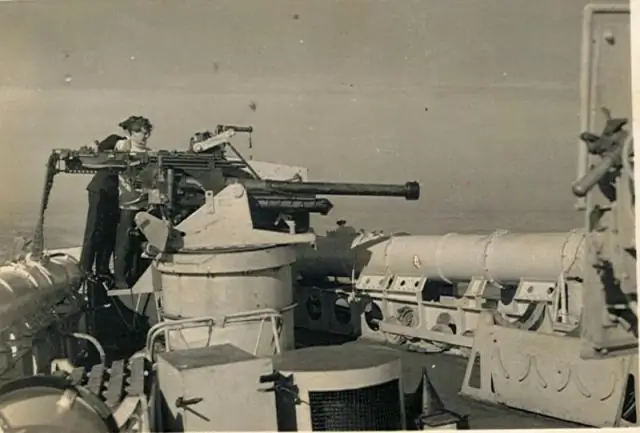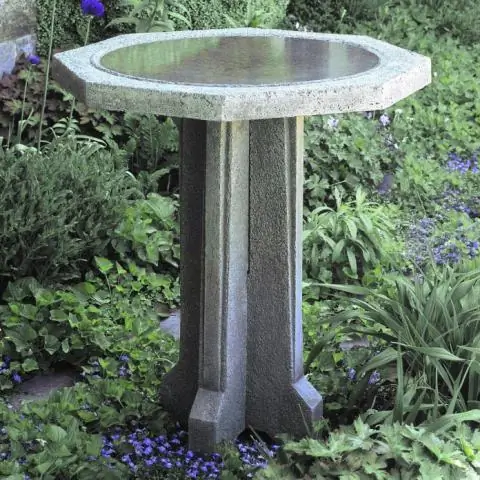
Table of contents:
- Author Bailey Albertson [email protected].
- Public 2023-12-17 12:53.
- Last modified 2025-01-23 12:41.
Adjustment of lighting in the bath and steam room

Our ancestors used to visit the bathhouse only in the daytime: you can't really wash yourself by the light of a candle or a kerosene lamp. Nowadays, electric lighting for a bath is no longer a problem, and we can take water procedures at any time of the day. The most important thing in this business is compliance with safety measures in the process of setting up electrical wiring and installing lighting devices.
Content
-
1 Preparation for work
1.1 Preparatory activities
-
2 Bringing a conductive cable into the room
2.1 More about the air line
- 3 Internal wiring installation
- 4 Choice of lighting fixtures
- 5 Video: lighting options in the bath
Preparation for work
Usually, the cable to the bath is not led from the pole, but from the switchboard, which is located in the house. In order to correctly calculate the required amount of wire, you need to make a preliminary marking on which lighting fixtures, sockets and switches will be marked.
It depends on the number of light sources what cross-section of the supply cable is required.
The use of electric ovens should be mentioned separately, if they are provided for in your bath. The supply cable requirements for these are specified in the manufacturer's instructions.
To correctly calculate the amount of cable, use the recommendations below.
- Find the total power of all electrical and lighting devices, divide the indicator by the voltage you need in the network. This will give you the calculated amperage. Now, according to the standard tables, select the approximately required wire cross-section.
- Next, decide whether a two-phase or three-phase network will be installed in your home. For three-phase networks, for example, the cross-section of the neutral wire can be equal to the cross-section of the supply conductor.
- Decide how you will lead the cable to the bath: underground or over the air. Usually the wire is run on top: it is cheaper and faster than laying the cable underground. For overhead cables, the maximum outdoor temperature must be taken into account. If in the conditions of your area it reaches 40 degrees, then you need to increase the design section by 25%. Do not forget to pay attention to what temperature the wire insulation can withstand, so that there is no problem of its rapid wear.
- Decide what material will be used for the cable. Aluminum is cheaper than copper, but the properties of this metal determine the cross-section that is larger in area than copper wire.

Summary table for the selection of cable cross-section
Preparatory activities
First of all, you should familiarize yourself with the Electrical Installation Rules. This document contains all the requirements for the installation and operation of electrical appliances in areas with high temperature and humidity.
The basic requirements for electrical wiring in such premises are as follows:
- cables should be laid only in directions strictly horizontal or vertical;
- turns of wires should be laid at an angle of 90 degrees;
- the horizontal wiring line is located at a distance of 10-20 cm from the ceiling, parallel to it;
- keep the distance between doors and wires at least 10 cm;
- switches located near the window should also be at a distance of 10 cm, and at a height of 1 m from the floor;
- sockets are located at a height of 30 cm from the floor;
- keep a distance of 50 cm between wires and metal objects such as batteries;
- wire the cables from the switchboard with a single piece of cable;
- wiring connection is done only in a soldered box, which has a high degree of protection against dust and moisture;
- the electrical panel must be mounted as close as possible to the inlet of the conductive cable.

Mount the electrical box next to the conductive cable entry
In this case, it is not allowed:
- installation of wires in the corners and opposite doorways;
- connecting more than two lighting devices per switch;
- bends and twists of wires, as well as their twisting (connections can only be made by soldering, welding and using terminals or bolt clamps);
- hiding junction boxes.
Before starting the installation work, use a pencil to draw on the wall using a level for the main cable routes. Identify the points where the equipment, lights, outlets and switches will be located. Transfer this diagram to paper and save it. It can come in handy over time when repair work is required.
Putting a conductive cable into the room
We have already said that the electricity in the bath should be drawn from the panel in the residential building, and not from the central highway. This can be done in two ways.
- Underground "transit". With this method, the outgoing cable is led underground and into the bath through the foundation, at a level of at least 0.5 m. You must first provide appropriate holes for these purposes. Pipes with a diameter twice as large as the cross-section of the wires will be inserted into them. Throughout the entire path, the power line must be protected from moisture and unnecessary loads by a rigid box (if the depth does not exceed 2 m).
- Air "transit". In this case, the line is pulled at a height of 2.75 m (in the absence of obstacles, for example, a road). If there is a significant distance between the structures, then intermediate supports must be provided so that the cable does not sag. The entrance to the bath should be done through the wall or roof.
On the one hand, underground cable routing is more reliable. But it is more troublesome and more expensive than the air line, so users often opt for the latter, although it is quite vulnerable
More about the air line
Laying through the air is dangerous in that it is threatened with constant tests for the strength of the power line ׃ precipitation, wind, weather changes, sunlight have a detrimental effect on the cable, so it must be well protected from any climatic vagaries. For wiring the line from home to the bathhouse through the air, two types of electrical wires are used
- naked, not covered with protective insulation;
- self-supporting rigid wire (SIP), covered with an insulating layer.
The second option is more suitable, since the cable holds its "shape" well and does not require a frame for installation. A dense layer of polyethylene acts as insulation, which perfectly withstands the blow of any element, and the core is made of aluminum. The minimum section is 16 mm square, which may be more than your actual needs. Due to the fact that the cable is rigid, it should never be run inside the house. Usually, before entering it, it is changed to a more elastic version with a copper core of the VVG type, with flame-resistant insulation.
Separately, it is worth considering the organization of the entry point to the bath. Better to opt for the wall. It will be very difficult to provide waterproofing for the inlet in the roof, moreover, there is a possibility of moisture getting inside the contact. But what if the minimum entry height (2.75 m) is not suitable for your bath? Here you can use a steel curved pipe that raises the cable to the required height and introduces it to the desired point, which is below the allowable mark.
Internal wiring installation
The bathhouse is an object with an increased fire hazard, therefore all elements of the circuit: sockets, switches and lighting devices, must have high protection against dust and moisture.
In the rooms reserved for the steam room and washing room, special care should be taken. Ideally, the wiring does not lead along (inside) the walls at all, but pulls the wire to the desired point through the room from the adjacent room

Installation diagram of electrical wiring in a bath with several rooms
Unfortunately, this effect is not always possible to achieve, so pay attention to the important points for arranging wiring in such areas ׃
- in the steam room and washing room, only closed wiring is done;
- in no case should the cable be laid near the oven;
- Place the sockets and switches for the steam room and the washing room in an adjacent, less dangerous room (for example, in the break room).

Do not locate outlets and switches directly in washrooms
When developing a wiring diagram, certain rules should be taken into account.
- Switches and sockets are not installed in the steam room and washing compartment. All devices are mounted in the corridor, rest room, dressing room. This requirement is justified by the high temperature and humidity in the steam room and washing section.
- Luminaires that are used in the steam room and sink should not be based on fluorescent lamps. They can simply explode from the heat and poison the room with mercury vapor. Since the lamps are attached to a wooden paneling, the maximum allowable power for them is 75 W. Better to use 60-watt incandescent bulbs.
- Installation of lighting devices should be carried out in the corners of the steam room or behind the seats. This arrangement is not accidental: hot air enters these places last, so there is no such temperature as under the ceiling.
- Lamps must be protected by waterproof and heat-resistant shades. Additionally, you can cover them with carved wooden screens in order to create a relaxing atmosphere. In the wash compartment, the lighting should be sufficiently bright, but be sure to cover the lamps with waterproof shades. For other rooms of the bath, there are no special requirements for devices, except for your preferences.
- In the bath rooms, as in the house, be sure to use either automatic machines that open the connection when overloads in the network, or an RCD (residual current device). Its functions are the same as those of the machine. The maximum current that most often requires lighting in a bath without an electric oven is 16 A.

Choice of lighting fixtures
Artificial light sources for baths and steam rooms are divided into three types:
Incandescent lamps. Familiar to us, the so-called "Ilyich's light bulbs", using a lot of electricity and having a small resource of work. If the general rules for mounting lamps are applicable for the dressing room and the rest room, then in the steam room such a lamp should be protected only by a glass shade with a metal body.
LED lamp. They have natural and bright light, and they last 20 times longer than incandescent bulbs. However, the resource reserve is rapidly decreasing under the influence of high temperature and humidity in the steam room, and it can be very difficult to change lamps of this type.
Fiber optic system. This option is ideal for a sauna: the optical fibers are durable and practically immune to the harsh climate of the sauna. With the help of a fiber-optic system, you can beautifully design the lighting (create a figure, the effect of a starry sky, etc.) and at any time equip the room with additional "lights".

Try to provide calm, even lighting in the bath.
It is better to make the lighting in the steam room dim. Place the lamps in corners or along the line of the ceiling: this way, the light is diffused using decorative wooden lampshades. A popular option is seat lighting; it gives the room an "inner glow" and special appeal.
Video: lighting options in the bath
As you can see, although it is difficult to make the right lighting in your bath, it is quite possible. Surely you will need the services of a professional electrician, but our advice will help you understand the intricacies of this process and significantly save on the purchase of material, as well as protect yourself from mistakes and unfair decisions of hired workers. Good luck to you!
Recommended:
How To Make A Chimney In A Bath With Your Own Hands: Scheme, Device And Calculation, Output Through The Ceiling, Insulation, Step-by-step Guide With Photos And Videos

The chimney in the bath: what is it, why is it needed, what kind of structure it has and how it is made by hand
How To Make A Steam Generator For A Bath (steam Gun) With Your Own Hands - Step By Step Instructions With Photos, Drawings And Video

How to make a steam generator and a steam gun for a bath with your own hands. Description of the device and its features. Instructions for creating a structure
How To Make A Door In The Bath With Your Own Hands - Step By Step Instructions With Photos, Drawings And Video

Details of the requirements for materials and construction of doors for the bath, depending on the location. DIY step-by-step making
How To Make A Font For A Bath With Your Own Hands, Wooden And From Other Materials - Step-by-step Instructions With Photos, Videos, Dimensions And Drawings

Why do you need a hot tub, its design. Types of fonts. How to make a font with your own hands: step by step instructions. Photo and video
How To Make A Partition In A Room With Your Own Hands: Selection Of Material And Instructions For Performing Work

Types of interior partitions and materials used to create them. The sequence of manufacturing partitions from plasterboard, aerated blocks and wood
